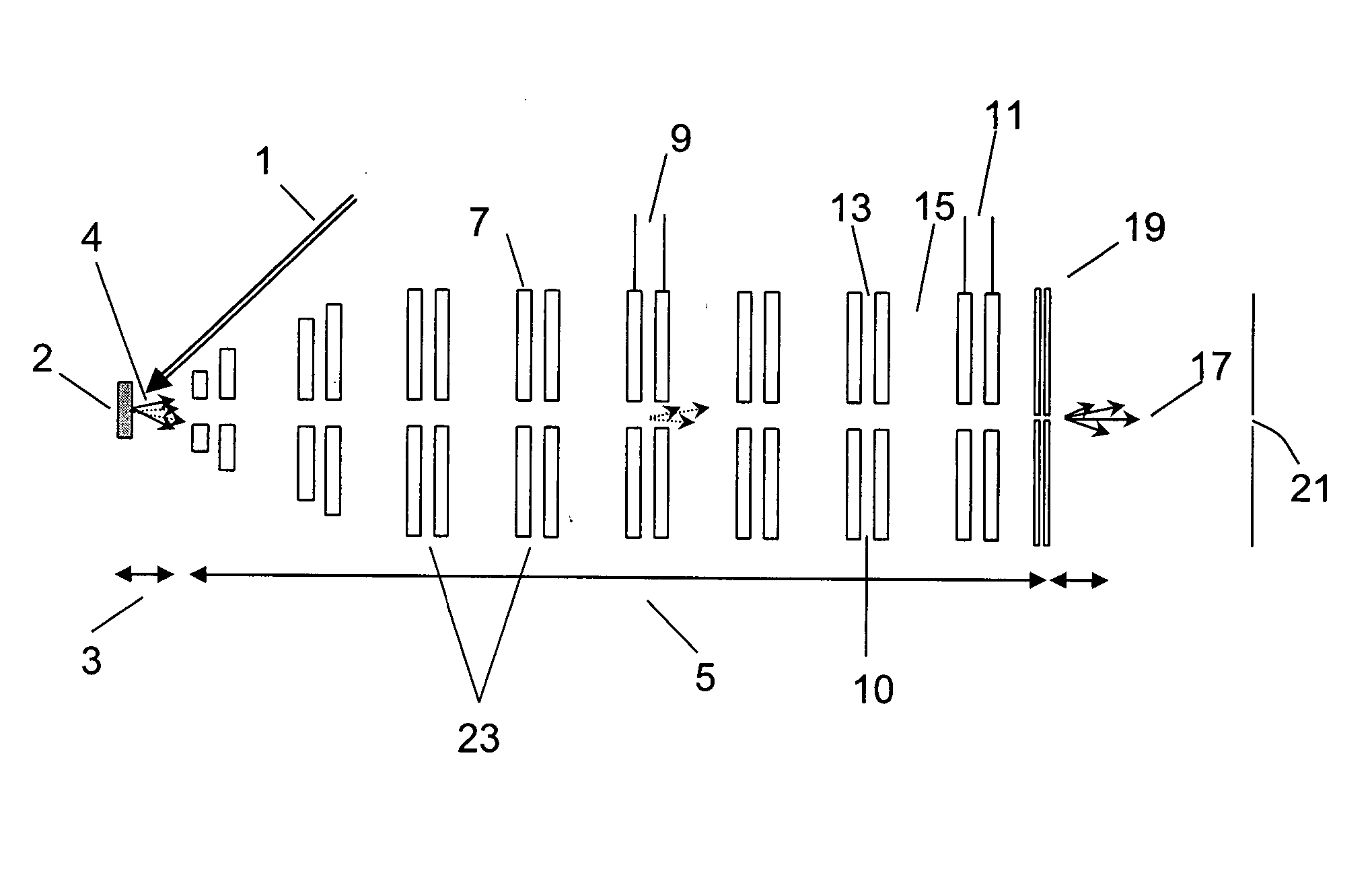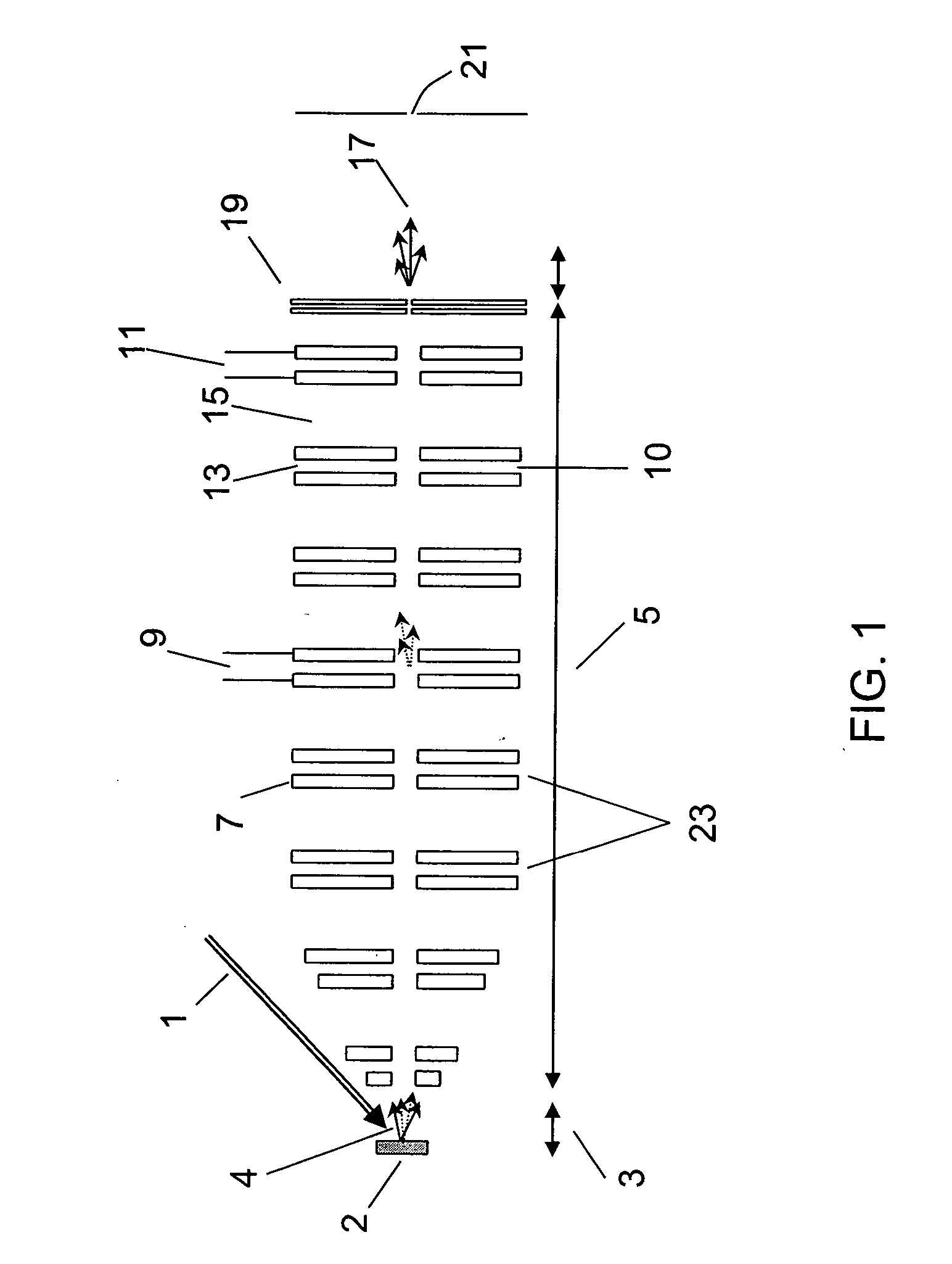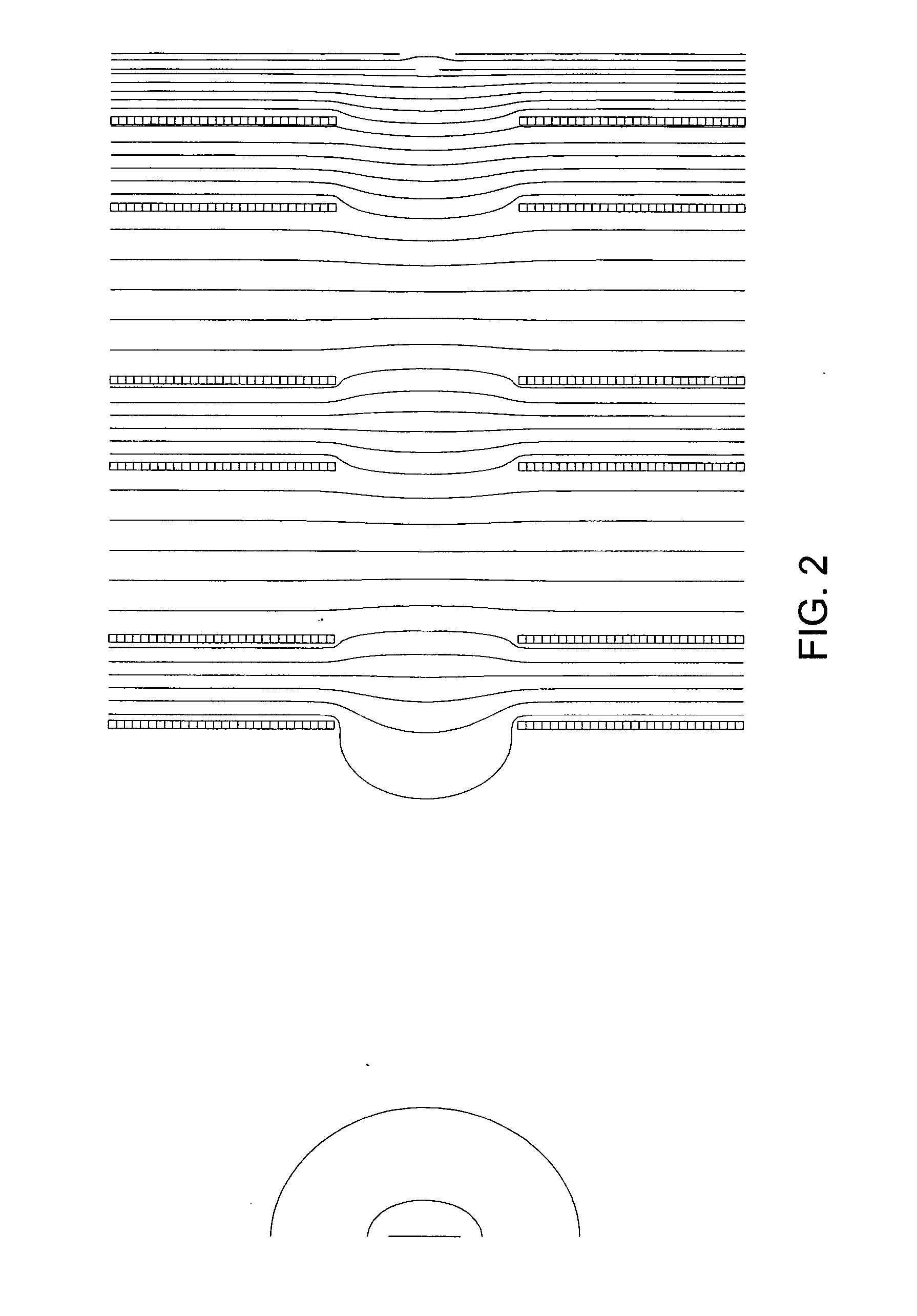Ion mobility TOF/MALDI/MS using drift cell alternating high and low electrical field regions
a high and low electrical field, drift cell technology, applied in the field of ion focusing, can solve the problems of significant ion loss, achieve the effect of improving ion transmission, improving mobility resolution, and simple implementation of collision-induced
- Summary
- Abstract
- Description
- Claims
- Application Information
AI Technical Summary
Benefits of technology
Problems solved by technology
Method used
Image
Examples
Embodiment Construction
[0056] As used herein, “a” or “an” means one or more. Unless otherwise indicated, the singular contains the plural and the plural contains the singular.
[0057] As used herein, “aperture” means “hole” or “orifice”.
[0058] As used herein, an “electrode triad” is a distinct group or cluster of three electrodes.
[0059] As used herein, the term “intra-electrode gap” refers to the gap between two electrodes of an electrode pair.
[0060] As used herein, the term, “inter-electrode gap” refers to the gap between electrode pairs.
[0061] As used herein, “MALDI” means matrix assisted laser desorption ionization.
[0062] As used herein, “SIMS” means secondary ion mass spectrometry.
[0063] As used herein, the term “TOF” is defined as a time-of-flight mass spectrometer; as used herein, “oTOF” is defined as a time-of-flight mass spectrometer configured orthogonally to the analytical axis of a preceding instrumental platform such as, for example, the separation axis of an ion mobility cell.
[0064] As ...
PUM
 Login to View More
Login to View More Abstract
Description
Claims
Application Information
 Login to View More
Login to View More - R&D
- Intellectual Property
- Life Sciences
- Materials
- Tech Scout
- Unparalleled Data Quality
- Higher Quality Content
- 60% Fewer Hallucinations
Browse by: Latest US Patents, China's latest patents, Technical Efficacy Thesaurus, Application Domain, Technology Topic, Popular Technical Reports.
© 2025 PatSnap. All rights reserved.Legal|Privacy policy|Modern Slavery Act Transparency Statement|Sitemap|About US| Contact US: help@patsnap.com



